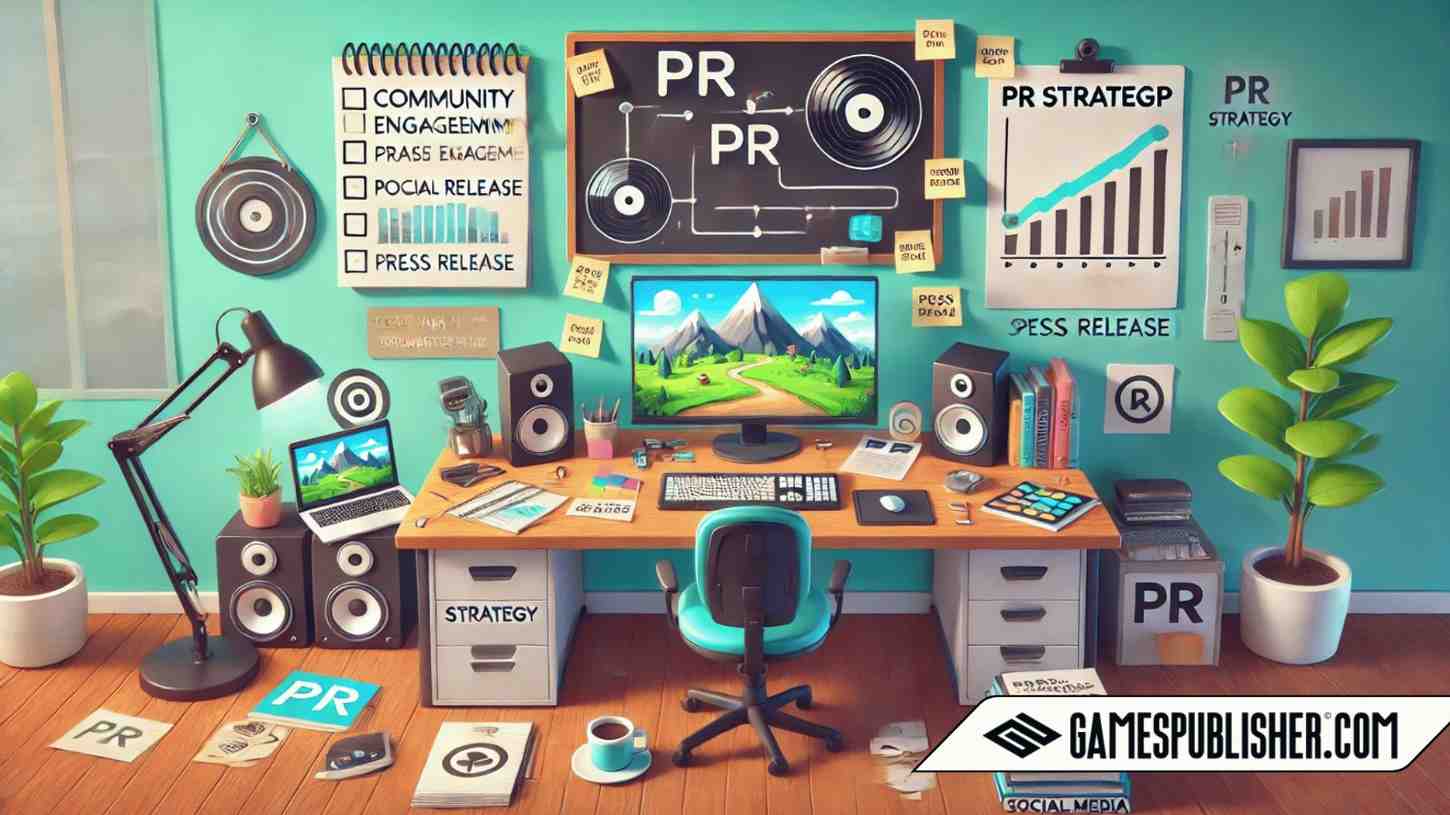Welcome to Gamespublisher.com! If you’re an indie game developer, you know how hard it can be to stand out in the crowded world of game development. It’s not enough to just have a great game—getting the word out is just as important. That’s where PR (Public Relations) comes in.
PR is all about making your game known to players, influencers, and the media. With a good PR plan, you can boost your game’s visibility, build a strong reputation, and get people talking about your game. This guide will show you how to create a solid PR strategy. Whether you’re getting ready to launch, trying to grow your community, or connecting with the right people, these tips will help you succeed.
Understanding the Importance of PR in Game Development
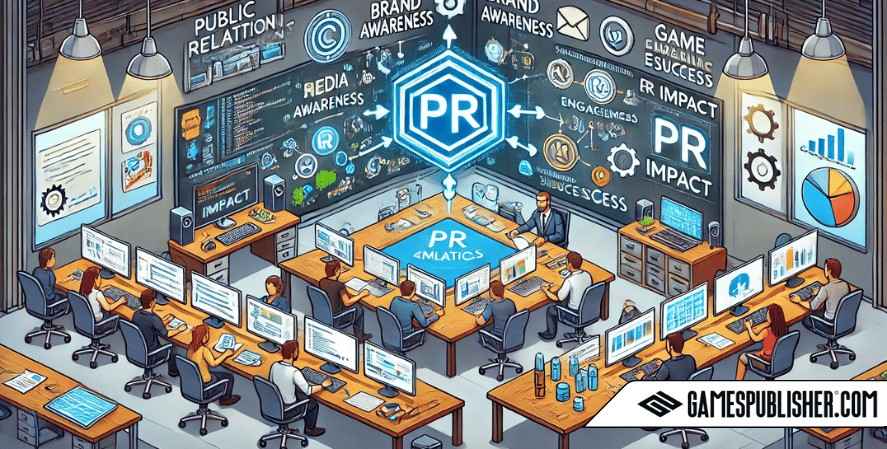
Why is PR so important for indie developers? Indie studios don’t have big budgets or teams like major game companies do. However, with a smart PR strategy, you can level the playing field.
With good PR, you can:
- Get Noticed: Make sure people know about your game.
- Build Credibility: Show that your studio is professional and serious.
- Drive Player Interest: Create excitement and anticipation before your game launches.
This makes PR a key tool for indie developers trying to compete in a crowded market.
Setting Clear PR Goals
Before you start planning, decide what you want to achieve. Setting clear goals helps you focus and track your progress.
Subtopic 1: Defining Success Metrics
What does success look like for your game? It could be:
- Getting Reviews: Secure coverage from top gaming sites.
- Social Media Buzz: Get people talking about your game on social media.
- Increased Sales: See a rise in sales after major announcements.
- Building a Community: Grow your followers on platforms like Discord or Twitter.
Subtopic 2: Short-Term vs. Long-Term Goals
Your goals will change depending on your game’s timeline:
- Short-Term Goals: Build a community before launch, increase your email list, or secure preview articles.
- Long-Term Goals: Keep players engaged after launch, update your game, and create a positive image for future projects.
Examples:
- Get 10 reviews from gaming websites within 2 months of release.
- Reach 5,000 Twitter followers before launch.
- Grow your Discord server by 50% in 3 months.
Research and Targeting the Right Audience
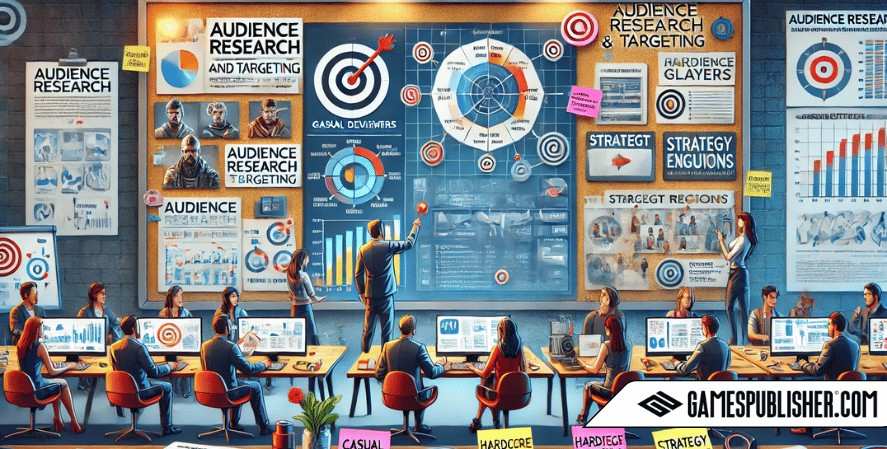
You need to know who your ideal players are and where to find them. Targeting the right audience helps you connect with the people most likely to enjoy your game.
Subtopic 1: Understanding Your Player Demographics
Start by asking:
- Who will play your game?
- What platforms do they use?
- What types of games do they like?
Use surveys, social media, and competitor research to find this information.
Subtopic 2: Creating a Player Persona
Create a profile for your typical player, known as a player persona. Include details like their age, interests, and gaming habits. This helps you craft messages that resonate.
Example Persona:
- Name: Sarah, the Puzzle Lover
- Age: 25
- Platforms: PC and Mobile
- Motivations: Loves solving complex puzzles and uncovering mysteries.
Subtopic 3: Finding the Right Channels and Outlets
Find out where your audience hangs out. Is it on YouTube, Twitter, or gaming websites? Make a list of websites, YouTubers, and streamers who cover your type of game.
Crafting an Effective Message
Your message needs to be clear and compelling. Focus on what makes your game unique.
Subtopic 1: Building a Strong Game Pitch
Write a short pitch that includes:
- What your game is about.
- Its unique features.
- Why people should play it.
Subtopic 2: Creating a Press Kit for Your Indie Game
A press kit is a package of information about your game. It should include:
- High-quality screenshots.
- A gameplay trailer.
- A short description of the game.
- Studio logos and your contact information.
Subtopic 3: Preparing a Media Press Release
A press release is a brief statement that shares news about your game. It should include:
- Who you are.
- What’s new.
- Why it matters.
Establishing Relationships with Media and Influencers
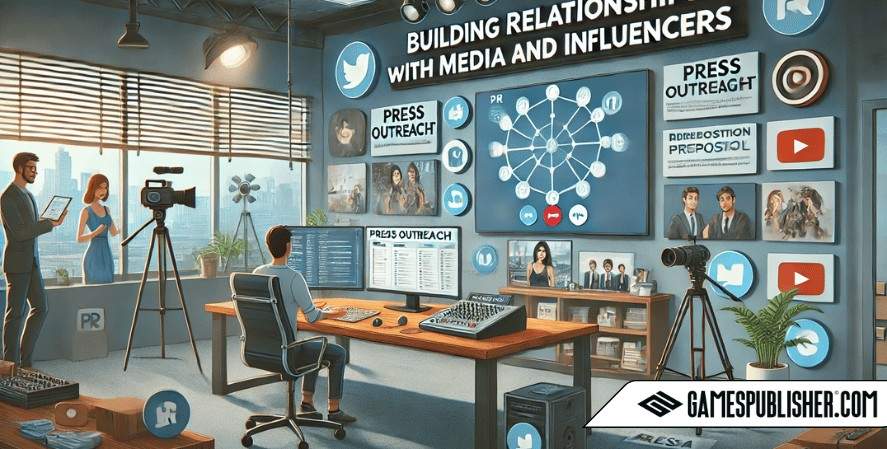
Reaching out to media and influencers can help your game get noticed by a wider audience. Build connections early and keep them updated.
Subtopic 1: Building a Media Contact List
Create a list of journalists, bloggers, and influencers who cover games like yours. Use tools like Muck Rack or BuzzStream to find contacts.
Subtopic 2: The Art of Personal Outreach
When reaching out, be personal. Mention their past articles or videos, and explain why your game is a good fit. Always offer early access or previews if you can.
Subtopic 3: Leveraging Social Media for Networking
Social media is a great way to connect with influencers. Connect with them by following, sharing their work, and interacting with their updates. Build a real relationship instead of just promoting your game.
Timing Your PR Efforts for Maximum Impact
When you announce your game can be just as important as what you announce.
Subtopic 1: Planning Around Key Milestones
Here’s when to focus your PR efforts:
- Pre-Launch: Announce your game and build excitement.
- Early Access: Get feedback and build your community.
- Launch Day: Get reviews and media coverage.
- Post-Launch: Share updates, patches, and new content.
Subtopic 2: Aligning with Industry Events and Trends
Plan announcements around major gaming events like GDC or PAX. Use trends, like Halloween, to theme your game content for extra visibility.
Executing Your PR Plan: Tools and Techniques
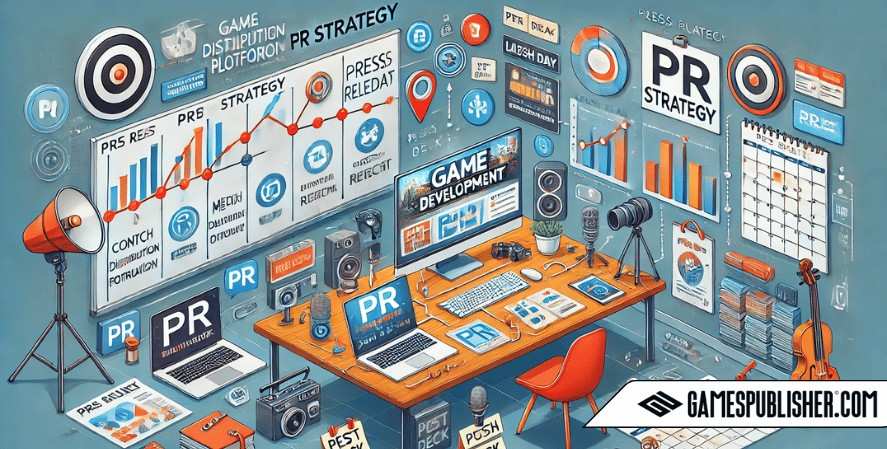
Good tools can make your PR work easier and more efficient.
Subtopic 1: Using PR Tools for Better Efficiency
Try these tools:
- Muck Rack: Find and connect with journalists.
- PressKit(): Create a professional press kit.
- BuzzSumo: Identify influencers and trending content.
Subtopic 2: Tracking and Measuring PR Success
Use tools like Google Analytics and Mention to track mentions, website visits, and social media buzz. Adjust your strategy based on these results.
Handling Negative Publicity and Criticism
Every game will face criticism. Responding correctly can help transform a negative situation into a positive outcome.
Subtopic 1: Developing a Crisis Management Plan
Be prepared for negative reviews or unexpected issues. Have a plan for who will respond, what to say, and when to escalate.
Subtopic 2: Responding to Criticism Professionally
Always be respectful. Thank the person for their feedback and show that you are listening. Avoid arguing or being defensive.
Conclusion
PR is a powerful tool for indie developers to get their games noticed. By setting clear goals, knowing your audience, and building strong relationships with the media, you can boost your game’s visibility and reputation.
Remember, PR is an ongoing process. Keep connecting, keep sharing, and keep learning. A strong PR strategy will help your game shine in a crowded market.
Loading survey...

